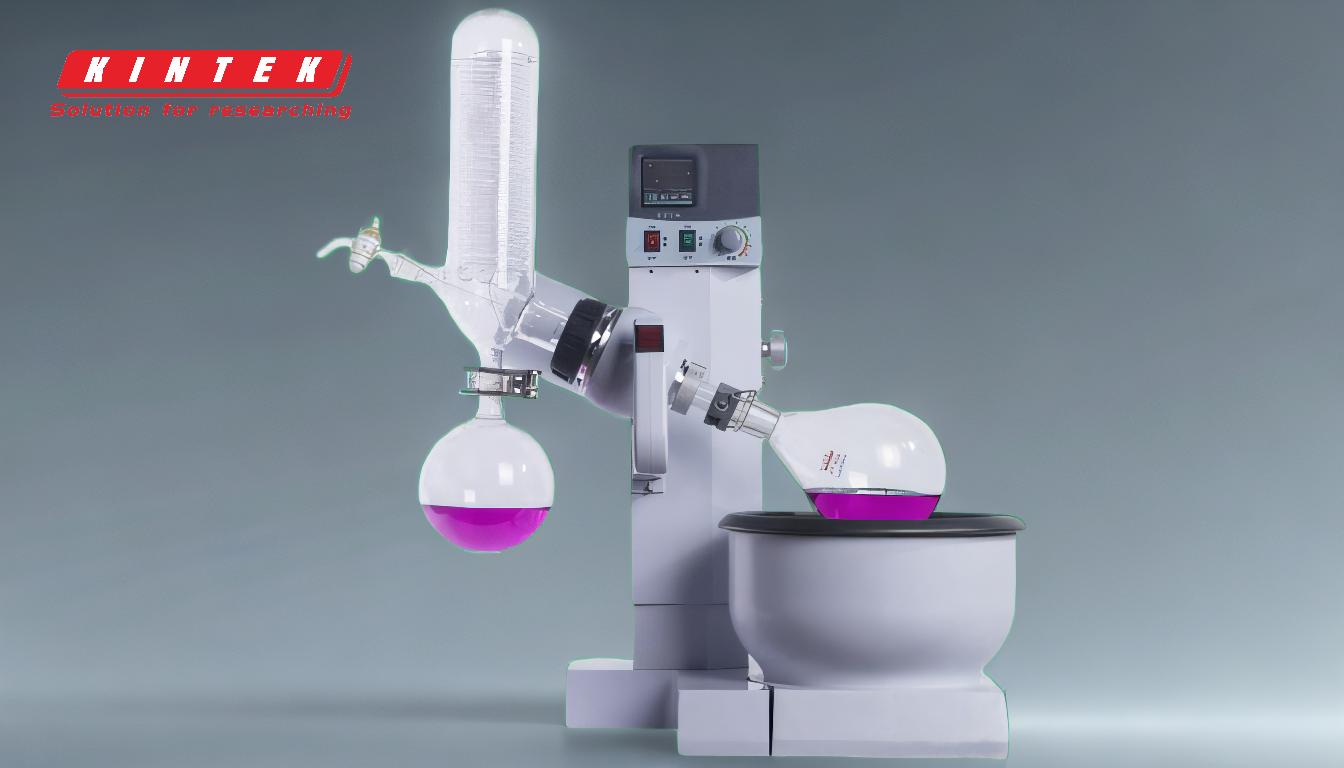When using a rotary evaporator in the laboratory, it is crucial to follow a series of precautions to ensure safety and efficiency. These precautions include avoiding contact with rotating parts, managing air-reactive materials carefully, preventing implosions and explosions, and ensuring proper handling of solvents and vacuum systems. Additionally, personal protective equipment (PPE) should be worn, and the equipment must be operated within safe temperature and speed limits. Proper cleaning and maintenance of the apparatus are also essential to prevent contamination and ensure longevity. By adhering to these guidelines, laboratory personnel can minimize risks and achieve optimal results.
Key Points Explained:

-
Avoiding Contact with Rotating Parts:
- Entanglement Risks: Loose clothing, hair, necklaces, or other jewelry can become entangled in the rotating parts of the rotary evaporator, leading to serious injuries. Always ensure that these items are secured or kept away from the apparatus.
- Operational Safety: When the rotary evaporator is in operation, keep a safe distance from the rotating flask and other moving components to prevent accidental contact.
-
Handling Air-Reactive Materials:
- Vacuum Conditions: Air-reactive materials can pose significant risks, especially under vacuum conditions. A leak in the system can draw air into the apparatus, potentially causing a violent reaction. Ensure that all connections are secure and that the system is properly sealed.
- Secondary Traps: For highly reactive materials, consider using secondary traps, such as liquid nitrogen or dry-ice condensers, to capture any reactive substances before they can cause harm.
-
Preventing Implosions and Explosions:
- Glassware Inspection: Always inspect glassware for flaws or cracks before use. Flawed glassware can lead to implosions under vacuum, causing injury and damage.
- Unstable Impurities: Avoid concentrating unstable impurities, as they can lead to explosions. Ensure that the solvents and materials used are stable and compatible with the rotary evaporator.
-
Proper Solvent Handling:
- Emptying Collection Flasks: Before starting the evaporation process, ensure that the solvent collection flask is empty to prevent the mixing of incompatible chemicals, which could lead to dangerous reactions.
- Bump Traps: Use a bump trap to prevent contamination of the condenser. Secure the bump trap or flask with a Keck clip or metal to ensure stability during operation.
- Volatile Solvents: For volatile solvents, use liquid nitrogen or dry-ice condensers to safely collect the solvent vapors. This prevents the release of toxic volatiles into the laboratory atmosphere.
-
Vacuum and Temperature Management:
- Vacuum Control: Manage the vacuum and stopcock carefully to vent the system after solvent discharge. This prevents the buildup of pressure and reduces the risk of implosion.
- Temperature Adjustment: Adjust the water bath temperature to a level below the boiling point of the solvent being evaporated. This prevents overheating and potential hazards associated with boiling solvents.
-
Personal Protective Equipment (PPE):
- Wearing PPE: Always wear appropriate PPE, including gloves, goggles, and lab coats, to protect against chemical splashes, burns, and other potential hazards.
- Handling Hot Materials: Be cautious when handling hot oils and glass components to prevent burns. Allow the equipment to cool down before disassembling or cleaning.
-
Cleaning and Maintenance:
- Post-Use Cleaning: After completing the evaporation process, clean the bump trap and empty the receiving flask. This prevents contamination and ensures the equipment is ready for future use.
- Regular Maintenance: Regularly inspect and maintain the rotary evaporator to ensure it operates safely and efficiently. Check for any signs of wear or damage and replace components as needed.
By following these precautions, laboratory personnel can safely and effectively use rotary evaporators, minimizing risks and ensuring the integrity of their experiments.
Summary Table:
| Precaution | Key Actions |
|---|---|
| Avoid Rotating Parts | Secure loose clothing, hair, and jewelry; maintain a safe distance during operation. |
| Handle Air-Reactive Materials | Ensure secure connections; use secondary traps like liquid nitrogen. |
| Prevent Implosions/Explosions | Inspect glassware for flaws; avoid unstable impurities. |
| Proper Solvent Handling | Empty collection flasks; use bump traps and volatile solvent condensers. |
| Vacuum & Temperature Control | Manage vacuum carefully; adjust water bath temperature below solvent boiling point. |
| Wear PPE | Use gloves, goggles, and lab coats; handle hot materials with care. |
| Cleaning & Maintenance | Clean bump traps and flasks post-use; inspect equipment regularly for wear. |
Ensure your lab operates safely and efficiently—contact our experts today for guidance on rotary evaporators!











